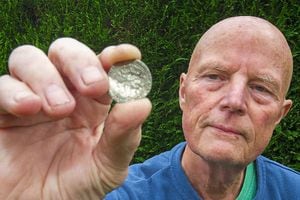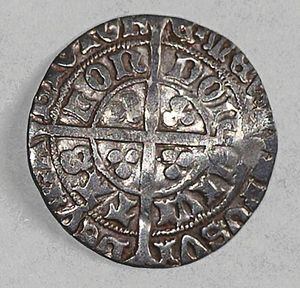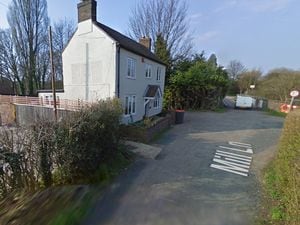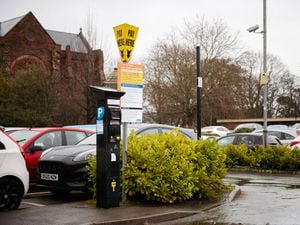Shropshire metal detectorist uncovers rare 500-year-old coin in village field
It dates back more than 500 years and was in circulation during the reign of Richard III. And this coin was found by a keen metal detectorist near a footpath near Ludlow.

Howard Murphy made the find in a spot that he has walked countless times. The coin is a Richard III groat, circa 1485, in good condition, although slightly chipped. The mint mark is obscured, but Mr Murphy said it is most likely a sun and rose.

Mr Murphy said: "Groats from Richard III are quite rare. I have been detecting for 30 years and this is the first time I have ever found a groat.
"It was minted the same year that he died at the battle of Bosworth, the interesting part is how scarce they are so I was so happy when I found it.
"I will not mention the name of the village but it was found on pasture near a footpath which I have walked over countless times and never gave much thought to detecting there.
"It leads to an area of fields where there used to be a church and a manor house and I have found a number of Tudor coins there from James I and Elizabeth I but none as old as this."
Mr Murphy has been detecting for decades in his home county of Yorkshire but continued his hobby when he moved to Shropshire nine years ago where he has had numerous finds.
Peter Reavill, finds liason officer from Shropshire Council, said the coin was in "superb condition".
He said: "The coin is a groat, which was worth at the time around four pence, and has spent the last 530 years in the ground with the detail on both faces clearly visible.
"The edges of the coin are clipped – this is commonly seen on medieval coinage as the coin is worth its weight in silver – the owner of the coin would have carefully trimmed the edges with a pair of shears removing a sliver of metal but not drastically altering the weight, over time by doing this you could gather enough silver together to spend on something else – so it was a way of creating money for free – but was highly illegal.
"Unlike some of the finds that I deal with – this is classed as a casual loss and is not part of a treasure case, as such the coin is owned by the finder and landowner."
Mr Reavill said the coin will now be logged by the Portable Antiquities Scheme.
He said: "It is a British Musuem project established to record finds like this coin on its website. By working alongside dedictaed metal detectorists and other finders we are slowly rewriting the history books of both the County and Country as a whole - filling in the gaps between known sites and tracing stories of our everyday history.
"By Mr. Murphy recording his find - we have another piece in the jigsaw of life in Shropshire which in time will help us understand more about our shared past."
It is not Mr Murphy's first historic find, he also found the Bitterley Hoard in 2013. The 69-year-old retired engineer, of Ludlow, found a silver coin in a farmer's field in Bitterley.
A ceramic pot containing a leather purse, both stuffed with silver and gold coins, lay beneath but Mr Murphy resisted the temptation to unearth them and left it to experts instead. The find consisted of 138 coins, all of high denomination and many were very well preserved.
The hoard was declared Treasure under the 1996 Treasure Act which obliges the owner to offer it for sale to a museum at a price set by an independent board of antiquities experts. It is now kept at the resource centre at Ludlow Museum and is set to go on display at the new Buttercross museum when it opens next year.





